Did you know that over 40% of motorcycle breakdowns can be prevented with the right motorcycle troubleshooting tips? Whether you’re a seasoned rider or just starting out, knowing how to quickly diagnose and resolve motorcycle troubles is essential to keeping your bike on the road and your wallet intact. This comprehensive guide dives deep into effective, step-by-step troubleshooting strategies, revealing expert tips that not only fix common motorcycle problems fast but also halt them before they start. Ready to ride confidently and safely every time? Let’s get started.
Why Motorcycle Troubleshooting Tips Save Riders Time and Money
"Did you know that over 40% of motorcycle breakdowns can be prevented with the right troubleshooting guide? Uncover the crucial steps every rider should know to get back on the road safely and swiftly."
Understanding and applying motorcycle troubleshooting tips can mean the difference between a smooth ride and a frustrating roadside delay. With regular use of a practical troubleshooting guide, riders often catch issues before they escalate into expensive repairs, saving both time and money. Many common motorcycle problems—like failing spark plugs, blown fuse woes, or clogged fuel injectors—offer warning signs that, if addressed early, can be fixed in your own garage.
For example, consider a scenario where your engine fails to start. Instead of waiting hours for a tow or paying high shop fees, a quick check for spark plug performance, fuel flow obstruction, or a blown fuse could get you moving in minutes. By consistently using troubleshooting tips, you’ll also prevent damage to critical components such as the ignition coil or the injection system, which could otherwise lead to costly repairs. In short, proactive motorcycle troubleshooting empowers you to fix issues fast and ride with confidence.
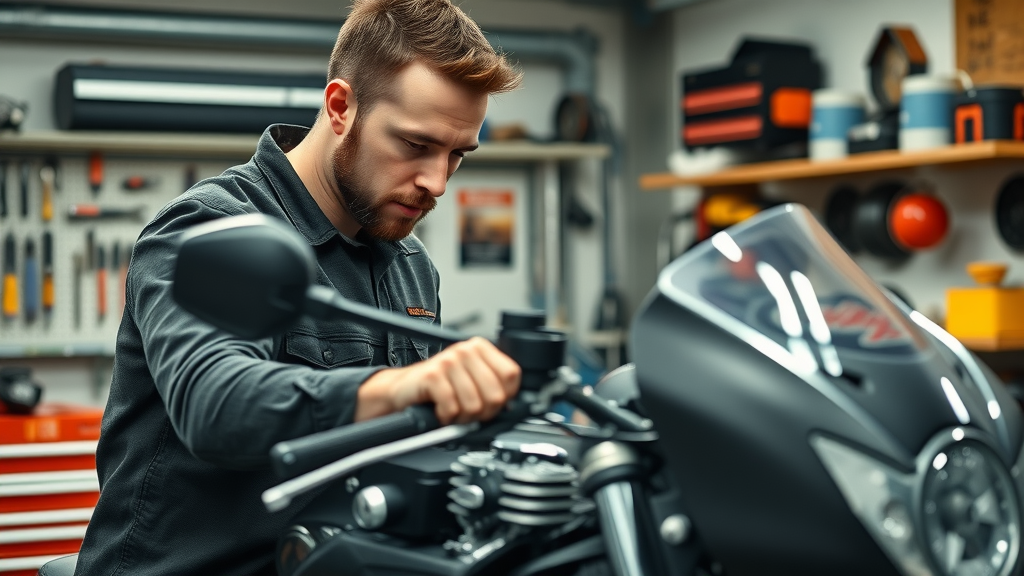
Inspecting a motorcycle engine: A key part of preventing common motorcycle problems.
Understanding Common Motorcycle Problems: A Troubleshooting Guide
Every rider will eventually face common motorcycle problems. Knowing how to spot the initial warning signs is key to quick and effortless repairs. A good troubleshooting guide empowers you to identify symptoms such as sudden loss of power, strange noises, or dashboard warning lights before they turn into complex motorcycle troubles.
Specific issues like a fuel injector malfunction, a failing spark plug, or even an overlooked blown fuse may present subtle hints long before a full breakdown. By learning the telltale signs of each problem, you can act decisively—protecting your ride from unnecessary wear or extended downtime. Following each step in a troubleshooting guide, from checking the gas tank and air mixture to testing your battery voltage, lays the foundation for effective, quick fixes that keep you riding.
-
Engine fails to start
-
Sudden loss of power
-
Unusual noises
-
Warning lights
What You'll Learn from These Motorcycle Troubleshooting Tips
This guide arms you with practical troubleshooting knowledge, making motorcycle maintenance straightforward for beginners and experts alike. You’ll be able to quickly diagnose the cause of most common motorcycle problems, confidently apply proven fixes, and know when to call in a professional. These skills reduce downtime, save money, and boost your riding enjoyment.
-
How to rapidly diagnose motorcycle problems
-
Solutions for the most frequent motorcycle troubles
-
Prevention methods for common motorcycle issues
-
When to seek professional help
Diagnosing Motorcycle Troubles: Step-by-Step Motorcycle Troubleshooting Tips
Identifying Common Motorcycle Problems Efficiently
When your bike exhibits strange behavior—like unexpected engine noise, loss of power, or persistent warning lights—the first step in any troubleshooting guide is identification . Listening carefully for abnormal sounds, such as knocking or whirring, can provide valuable clues about failing spark plugs, clogged fuel injectors, or even a blown fuse. Check your dashboard for warning lights, as these signals are often your motorcycle’s way of telling you there’s a problem with the injection system, battery voltage, or electrical connections.
Another efficient way to pinpoint motorcycle troubles is to use your senses beyond hearing and sight. A strong odor of fuel can indicate leaks in the fuel line, gas tank, or issues with air mixture, while the scent of burning oil may signal a deeper concern. Apply this holistic troubleshooting guide, and don’t overlook subtle cues—the quicker you diagnose the issue, the faster you’ll restore your motorcycle’s health.
-
Listening for abnormal sounds
-
Checking dashboard warning lights
-
Smelling for fuel leaks or burning oil
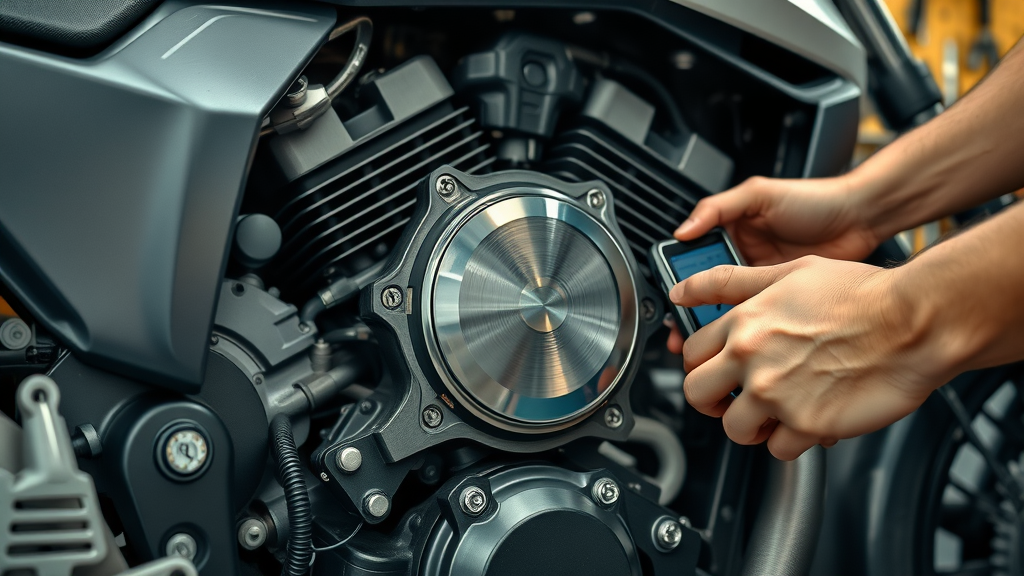
Expert diagnostics can reveal hidden motorcycle problems fast.
Essential Troubleshooting Tools and Equipment List
Being prepared with the right tools is an essential foundation of effective motorcycle troubleshooting. A compact yet thorough kit can transform a daunting repair into a routine fix. High on your list should be a multimeter to test battery voltage and electrical continuity; a spark plug wrench for checking and replacing spark plugs; and an array of spare fuses for when a blown fuse strikes unexpectedly. A selection of screwdrivers will help dismantle components carefully, while a tire gauge ensures your tires are at optimal pressure, preventing further motorcycle problems.
-
Multimeter
-
Spark plug wrench
-
Fuses
-
Screwdrivers
-
Tire gauge
With these tools readily available, you can handle a wide range of common motorcycle problems—saving both money and time while boosting your confidence as a rider. Make sure your kit is organized and checked regularly, so it’s ready whenever you need it.
Spotting and Fixing Spark Plug Problems Using Motorcycle Troubleshooting Tips
Recognizing Failing Spark Plugs
Failing spark plugs are among the leading causes of engine misfires, hard starts, and poor fuel efficiency. Using proper motorcycle troubleshooting tips, you can identify failing spark plugs before a complete breakdown occurs. Signs include hard starting (your engine cranking but not firing), misfiring at idle or under load, and a noticeable drop in miles per gallon. These symptoms indicate that your spark plugs might not be producing the necessary spark for combustion—impacting overall engine performance.
-
Hard starting
-
Misfiring engine
-
Reduced fuel efficiency
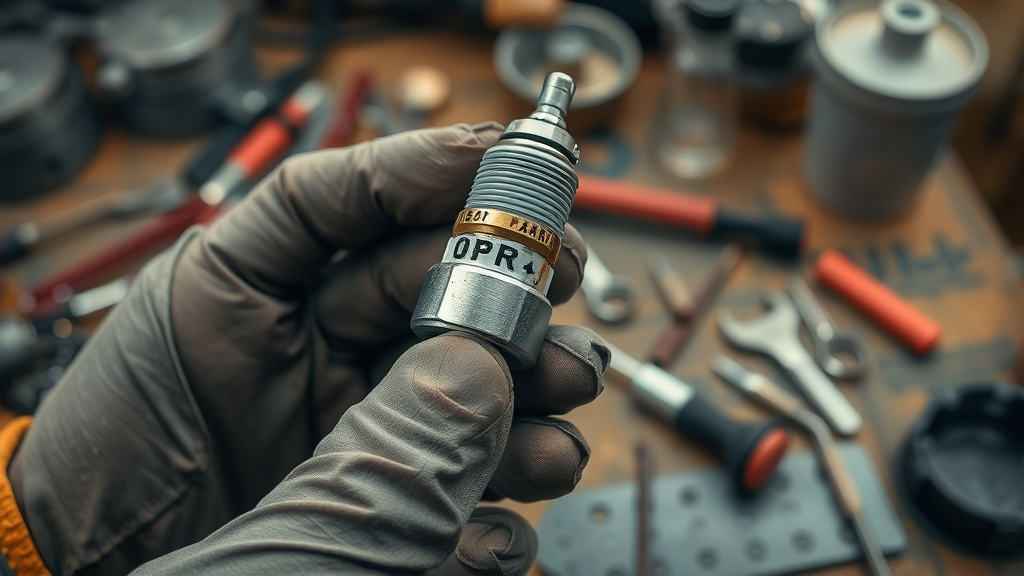
Worn spark plugs can cause a variety of common motorcycle problems.
Being proactive in checking your spark plugs—especially before long rides—can save you from sudden motorcycle troubles. Keep a replacement handy and inspect for deposits or wear every few thousand miles as detailed in our troubleshooting guide.
How to Replace a Faulty Spark Plug: A Step-by-Step Troubleshooting Guide
Replacing a faulty spark plug is often a simple fix you can perform at home. First, let your motorcycle cool and gather your tools—specifically a spark plug wrench and a new plug. Disconnect the plug wire, remove the old spark plug, and examine it for signs of damage or buildup. Next, check that your new plug matches the manufacturer’s specifications and set its gap using a feeler gauge. Insert the new spark plug gently, tighten until snug, and reconnect the wire. Start your motorcycle and listen for a strong, even idle—a sure sign that your troubleshooting was a success!
Performing this repair regularly not only solves misfiring and engine starting issues but also prevents further stress on your fuel injection system, ignition coil, and battery. A key takeaway from every reliable troubleshooting guide is that routine attention to spark plugs is vital for preventing more serious motorcycle problems down the road.
Fuel Injector and Injection System Troubles: Advanced Motorcycle Troubleshooting Tips
Clogged Fuel Injector Symptoms and Solutions
Modern motorcycles rely heavily on clean, efficient fuel injectors to deliver precise fuel flow to the engine. A clogged fuel injector disrupts this flow, leading to engine stalling, poor throttle response, or even backfiring. If you notice that your bike hesitates when accelerating or stalls at idle, suspect a clogged fuel injector. These symptoms often mimic other motorcycle troubles, so it’s crucial to combine physical inspection with diagnostic tests for a proper fix.
-
Engine stalling
-
Poor throttle response
-
Backfiring
Timely intervention—such as using fuel system cleaner or disassembling the injector for cleaning—can restore performance and maintain the health of your motorcycle’s injection system. Consult the troubleshooting guide for your motorcycle model for specific steps and cleaning solutions to use.
Clearing a Clogged Fuel Injector Safely
Addressing a clogged fuel injector requires precision and care. Start by disconnecting the power supply to the injector and removing it according to your manufacturer’s guidelines. Use a high-quality cleaning solution and follow recommended safety precautions, avoiding damage to the delicate nozzle. For stubborn buildup, ultrasonic cleaning or professional services may be required. Once cleaned, reinstall the injector and test for smooth operation.
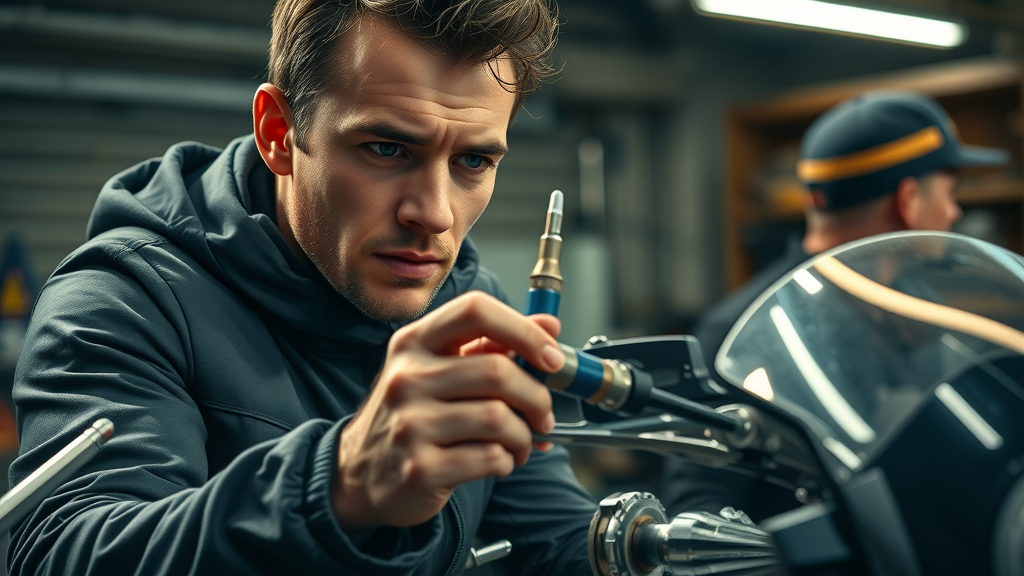
Regular fuel injector checks are vital for preventing engine stalling and poor performance.
If you’re unsure about tackling this repair or lack the appropriate tools, don’t hesitate to seek expert help. Many blown fuse or failed injector issues arise due to improper DIY work—trustworthy troubleshooting guides stress the importance of knowing your limits.
Maintaining Your Injection System for Fewer Motorcycle Problems
Routine maintenance of your injection system is one of the most effective motorcycle troubleshooting tips for long-term bike health. Use only high-quality fuel and consider seasonal use of fuel system cleaner to prevent debris buildup. Regularly inspect your fuel lines for leaks and ensure connections are tight and free of cracks. Keeping the air mixture correct and protecting the fuel system during winter storage are also key steps.
By making these tasks a habit, you’ll avoid many common motorcycle problems associated with both the fuel injector and broader engine system. You’ll also enjoy smoother throttle response and more consistent performance, minimizing the chance of encountering frustrating motorcycle troubles during your rides.
Blown Fuse Woes: Quick Motorcycle Troubleshooting Tips for Electrical Issues
How to Detect Blown Fuses and Replace Them
A blown fuse can paralyze your motorcycle’s electrical functions—everything from the starter to the lights and horn. First signs include a motorcycle that won’t start, a sudden loss of all lights, or no response from accessories. Check your manual to locate the main fuse box. Remove the suspected fuse and inspect the metal strip inside; if it’s broken or blackened, you have a blown fuse.
-
Motorcycle won’t start at all
-
No lights or horn
-
Sudden loss of accessories
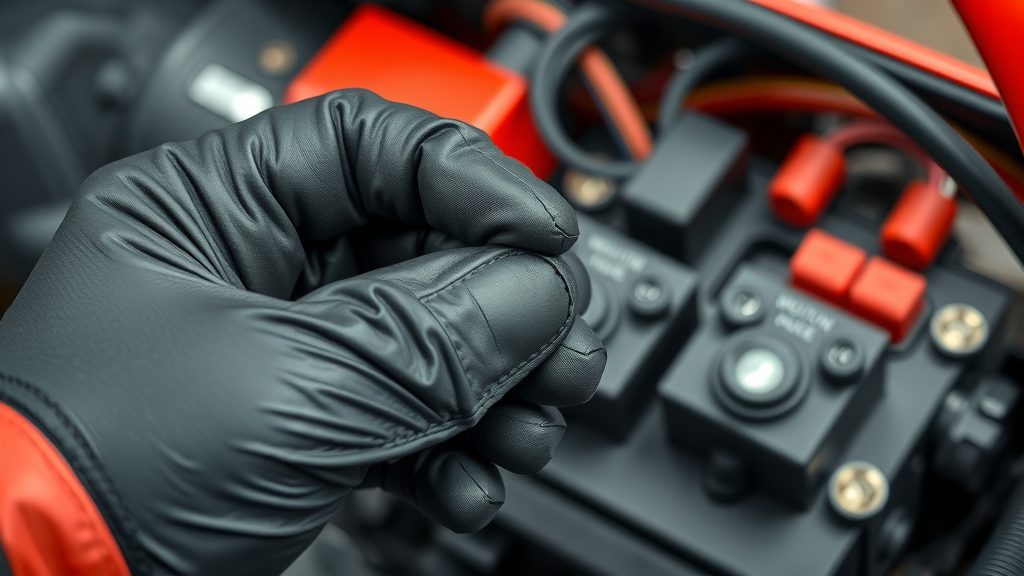
Replacing blown fuses promptly restores critical systems on your motorcycle.
To fix, simply replace blown fuses with fresh ones of the same amperage rating. Replacing blown fuses is quick and usually gets your systems working again. If a replacement fuse immediately fails, it signals a deeper electrical issue, such as a wiring short, which requires a more advanced troubleshooting guide or professional assistance.
Preventing Future Blown Fuse and Blown Fuses Problems
Blown fuses typically result from overloaded circuits, worn insulation, or damaged components. Prevent future issues by conducting regular inspections of the wiring harness, connectors, and sockets for corrosion or looseness. Avoid adding unauthorized electrical accessories that exceed the system’s capacity. Additionally, keep spare fuses in your tool kit to handle breakdowns on the go, and periodically test components like lights, horn, and ignition for unpredictable power loss. Following these motorcycle troubleshooting tips ensures you stay ahead of electrical issues and prevents a minor blown fuse from stranding you unexpectedly.
Remember: If you experience recurring blown fuses or unexplained power loss—even after following basic troubleshooting steps—it’s time to consult an expert. Persistent electrical issues can lead to more severe motorcycle troubles and affect other safety systems.
Preventing and Fixing Other Common Motorcycle Troubles with Proactive Motorcycle Troubleshooting Tips
While blown fuses and failing spark plugs are often top of mind, several other minor yet prevalent motorcycle problems can be tackled at home. Proactive motorcycle troubleshooting tips recommend checking for low tire pressure, making sure your chain is lubricated and tensioned correctly, and testing your battery’s voltage to ensure it’s fully charged and ready to turn over the engine.
-
Low tire pressure
-
Chain lubrication problems
-
Weak battery
Staying on top of these common motorcycle problems with regular inspections is the most effective strategy for long-term reliability. Use this prevention checklist to keep your bike in top shape:
-
Regularly inspect all systems
-
Follow manufacturer service intervals
-
Store bike in dry, safe places
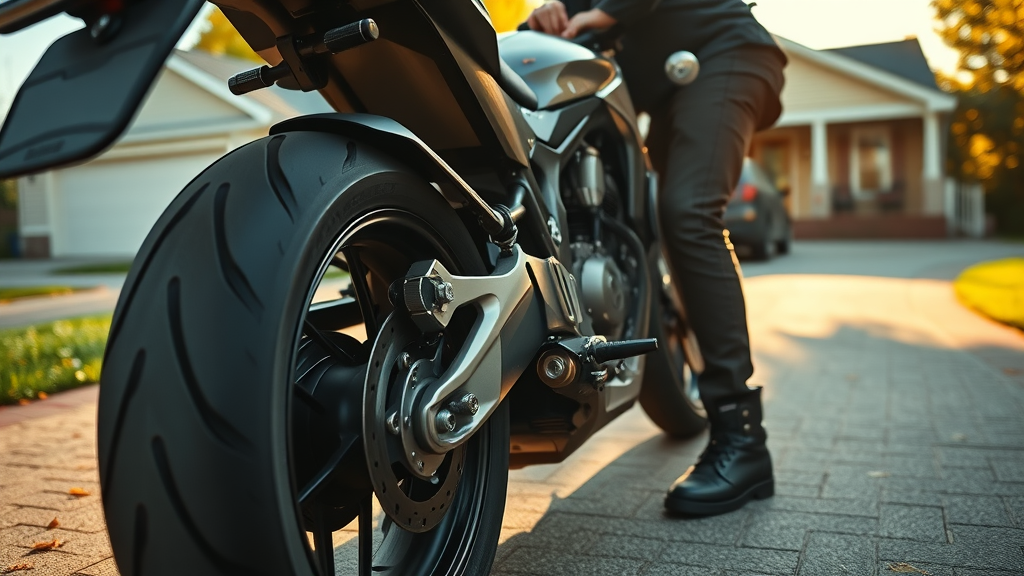
Routine multi-point checks help avoid the most common motorcycle troubles.
"Proper motorcycle troubleshooting tips not only solve breakdowns—they prevent them."
By keeping up with this checklist and addressing nuisance issues right away, you create a routine that not only fixes but also prevents the most pervasive motorcycle troubles, like issues with the gas tank, brake pads, or weak battery voltage. This proactive approach is the hallmark of responsible motorcycle ownership.
People Also Ask About Motorcycle Troubleshooting Tips
How do I figure out what's wrong with my motorcycle?
-
Check spark plugs, fuel injectors, fuses, and listen for unusual engine noises. Apply a step-by-step troubleshooting guide for in-depth diagnostics.
Diagnosing your motorcycle starts by visually inspecting critical areas such as the spark plug for wear, testing the fuel injector for clogs, and checking the status of fuses for any blowouts. An organized troubleshooting guide helps you proceed logically to pinpoint where the issue lies, saving you time and preventing guesswork repairs. Always begin with the simplest solutions, like checking battery voltage and ensuring proper fuel flow before moving to complex electrical or injection system assessments.
What's the hardest trick to do on a motorcycle?
-
Professional stunt riders often cite the stoppie (front-wheelie) and drifting as advanced tricks, which require flawless motorcycle performance and troubleshooting of all components.
Advanced motorcycle stunts such as stoppies or drifting demand not only exceptional riding skills but also a flawlessly maintained motorcycle. Resolving issues—like a worn spark plug, a sticky fuel injector, or a blown fuse—ensures every component responds precisely. Riders who practice these tricks follow strict troubleshooting routines, making sure the gas tank is filled, the fuel flow is uninterrupted, and the electrical system, from the main fuse to the ignition coil, is in optimal shape for peak performance.
What are two main things you should never do on a motorcycle?
-
Never ignore recurring motorcycle problems and don’t attempt repairs beyond your expertise, especially electrical or fuel injection system issues.
Ignoring persistent motorcycle troubles can quickly lead to bigger, more expensive repairs—or compromise your safety. Similarly, attempting complex troubleshooting, especially repairs involving the fuel injector, injection system, or wiring harness, without the necessary expertise can cause more harm than good. When in doubt, always turn to a professional or consult a detailed troubleshooting guide for clear, safe steps.
What is the common problem of motorcycles?
-
The most common motorcycle problems include failing spark plugs, clogged fuel injectors, blown fuses, and improper maintenance.
The key recurring issues include spark plug wear, which can cause engine misfires, clogged fuel injectors affecting fuel delivery and throttle response, and blown fuses that disrupt critical electrical systems. Inadequate maintenance—like neglecting chain lubrication, tire pressure, or battery checks—can also lead to frequent motorcycle troubles. Adhering to motorcycle troubleshooting tips and sticking to a maintenance routine keeps your ride and peace of mind intact.
Quick-Reference Table: Diagnosing the Most Common Motorcycle Problems
|
Problem |
Symptom |
Troubleshooting Tip |
|---|---|---|
|
Spark plug issue |
Engine misses or won’t start |
Check and replace spark plug |
|
Clogged fuel injector |
Loss of power, stalling |
Clean fuel injector |
|
Blown fuse |
No power to lights/horn |
Replace fuse, check circuit |
|
Battery issue |
Weak/no start |
Charge/replace battery |
|
Low tire pressure |
Poor handling |
Inflate tires to recommended PSI |
Expert Motorcycle Troubleshooting Tips for Beginners and Veterans
-
Always carry a compact troubleshooting kit
-
Keep a log of recurring motorcycle troubles
-
Schedule regular professional inspections
Whether you’re new to motorcycles or a riding veteran, adopting these habits ensures you stay ahead of common motorcycle problems. Carrying a troubleshooting kit means you’re always prepared for a blown fuse or loose spark plug. Keeping a log helps spot patterns in recurring troubles, while professional inspections catch what you might miss—giving your motorcycle the best chance for long-term reliability and safety.
Consistent attention to these details aligns with expert advice found in every thorough troubleshooting guide and makes even complicated repairs manageable.
Most Overlooked Yet Essential Motorcycle Troubleshooting Tips
-
Inspect and replace spark plugs seasonally
-
Regularly clean fuel injectors
-
Check fuses monthly
-
Monitor signs of clogged fuel
-
Test electrical connections
Many riders focus only on obvious issues, neglecting key yet simple maintenance steps. Regular inspection and replacement of spark plugs each season guarantee optimal combustion and performance. Cleaning your fuel injector prevents power loss and poor throttle response. Monthly checks of fuses and monitoring for clogged fuel lines or tank issues can avert breakdowns. Frequent testing of electrical connections ensures every ride is safe and trouble-free.
Embrace these often-overlooked troubleshooting tips to keep your motorcycle operating at peak performance all year round.
FAQ: Fast Answers to Pressing Motorcycle Troubles
How often should I use motorcycle troubleshooting tips for regular maintenance?
-
Apply a checklist before every long ride and after every 3-5 routine uses, focusing on spark plugs, fuel injectors, and fuses.
Regular checks using proven troubleshooting tips greatly reduce the odds of encountering common motorcycle problems. Focusing on spark plugs, fuel injectors, and the electrical system ensures smoother operation, saves money, and enhances safety. Adapt your frequency based on your riding habits and the manufacturer’s recommendations.
Can I handle blown fuses and clogged fuel injectors at home?
-
Many blown fuses are simple to change. Cleaning clogged injectors may need special tools, but a troubleshooting guide helps determine when to DIY or seek expert help.
Simple tasks, such as replacing blown fuses, can usually be handled with the tools found in your kit. Cleaning a clogged fuel injector, however, may require more advanced equipment. Consult a detailed troubleshooting guide to evaluate your capabilities—and remember, if ever in doubt, calling a professional will prevent accidental damage and costly repairs.
Why is my motorcycle misfiring after changing spark plugs?
-
If misfiring persists, double-check plug gap and connections. If the issue continues, inspect the fuel injection system or wiring for faults.
Ensure that your new spark plugs meet your bike’s specifications and that the connections are secure. If the problem continues, expand your troubleshooting efforts to include the fuel injection system and verify there are no loose, damaged, or corroded wires. Timely intervention using these motorcycle troubleshooting tips can prevent further performance issues.
Key Advice: Never Ignore Motorcycle Troubles and Regularly Use Motorcycle Troubleshooting Tips
"Routine attention to spark plugs, fuel injection systems, and fuses with expert motorcycle troubleshooting tips is the mark of a responsible rider."
Taking immediate action when you notice motorcycle problems can save you from costlier repairs down the line and prevent dangerous breakdowns. Make regular troubleshooting checks part of your standard maintenance routine.
Ready to Solve Your Motorcycle Troubles? Find Expert Guidance Now
-
If you’re still having issues after following this comprehensive troubleshooting guide, or you want professional help, call us today: 847-458-4858 for fast repairs and expert advice.
Conclusion
Act on symptoms quickly, follow each troubleshooting guide step, and seek help when issues persist. This proactive approach ensures safety and optimizes your motorcycle’s performance.
To enhance your understanding of motorcycle troubleshooting, consider exploring the following resources:
-
“Motorcycle Won’t Start? Essential Troubleshooting Tips” ( insurance.harley-davidson.com )
This guide from Harley-Davidson® Insurance provides a comprehensive checklist for diagnosing starting issues, covering aspects like ignition switches, fuel levels, and electrical connections.
-
“Motorcycle Diagnostic Tips” ( revzilla.com )
RevZilla offers insights into common electrical problems, lighting issues, and carburetor maintenance, helping riders identify and resolve various mechanical concerns.
These resources offer valuable insights to help you diagnose and resolve common motorcycle issues efficiently.
 Add Row
Add Row  Add
Add 
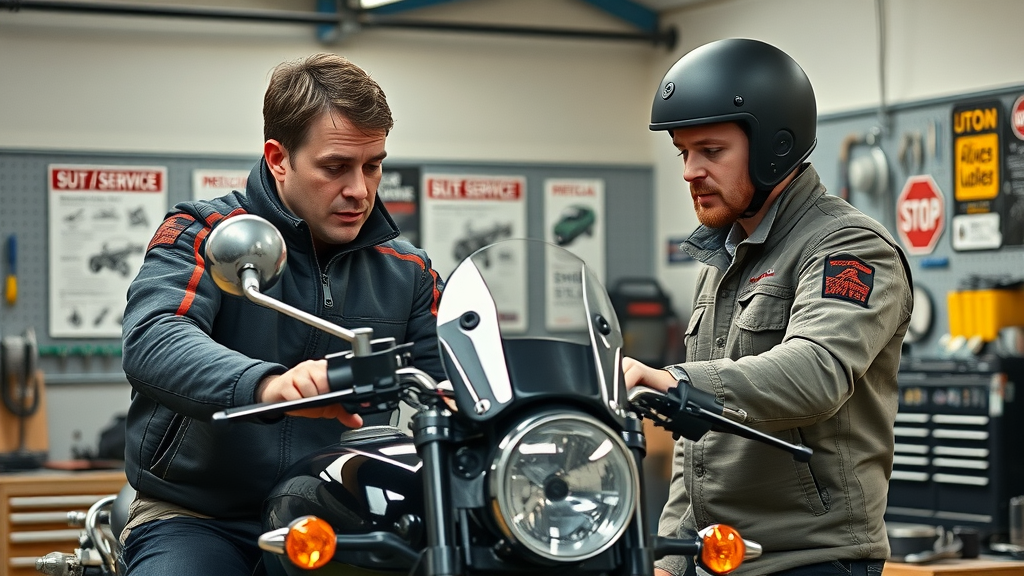
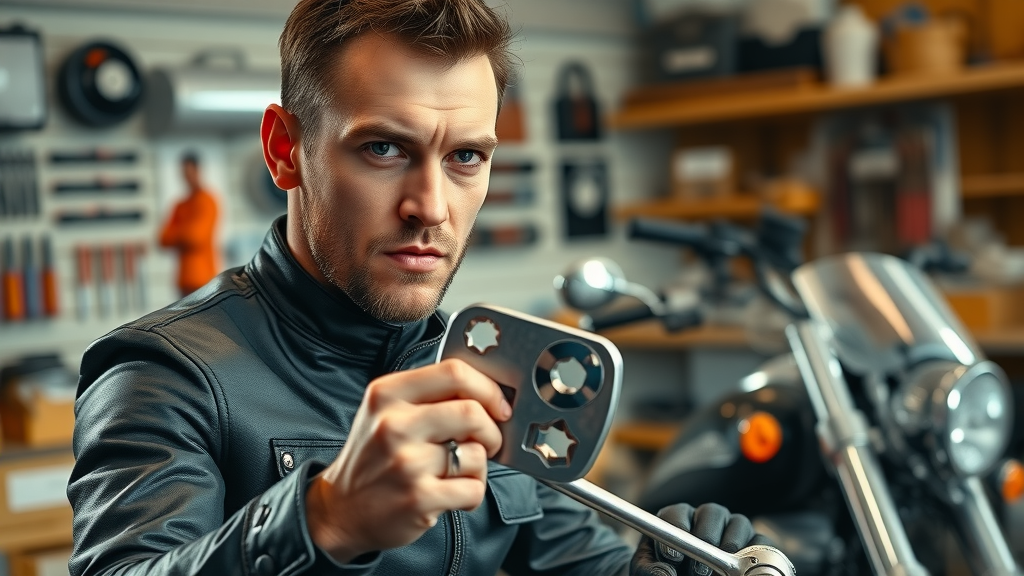
Write A Comment